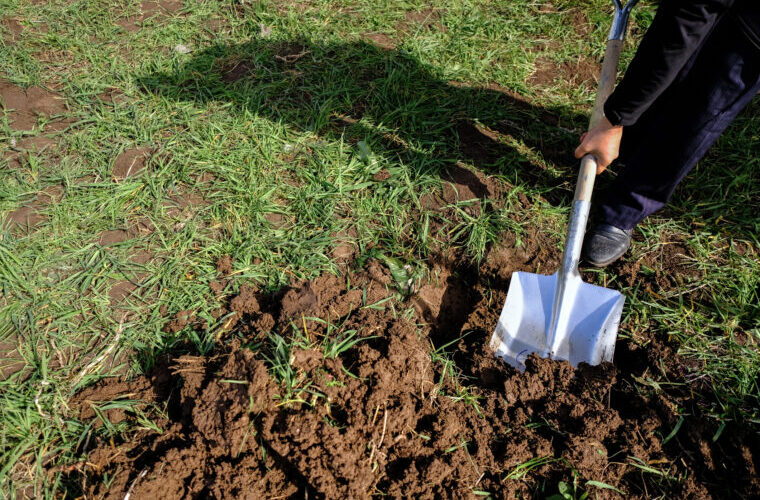Gardening is hard enough without following bad advice that will waste your time, energy and money. So join me as I discuss eight gardening tips that you can ignore. Hi, I’m Gardener Scott and I completely support using tips from experienced gardeners and those that know what they’re doing to help other gardeners in their gardening journey to make it easier. But there’s just so much advice out there that really has no basis in any research or scientific fact. There’s a lot of stuff that gardeners do that just doesn’t work. So here’s eight that I’m going to share now that hopefully will save you some of that time, energy and money and make the whole journey just that much easier.
The first tip is to buy ladybugs to help with the pests in your garden. Just don’t do it. There are many companies out there that will sell you bags of ladybugs. With the idea being that you release them into your garden space, they’ll eat some of those harmful pests like aphids and it will greatly reduce your pest problem. I’ve done this. I’ve actually bought bags of ladybugs in years past when I really didn’t know as much as I do now. This is a brand new garden space. I’ve only had it for a few months. It’s continuing to grow and I’ll be building it for months to come. All of the plants that I’m growing in this space will be brand new. They’ll be fresh green growth. Ideal food for aphids and many other pests. So I could be tempted to buy some ladybugs to help me out. But the ladybugs that you’re going to buy, most of them are harvested from wild populations. And wild ladybugs have a particular home that they’re going to return to. There’s a children’s rhyme that begins, ladybug, ladybug, fly away home. Well, that’s exactly what happens when you buy a bag of ladybugs and release them in your garden. Those wild populations are looking for their home. So as soon as you release them, they’re flying away. Now, you can mitigate that to some degree. water your garden before releasing them because they’re usually dehydrated and they need some water. But then they’ll fly away. If you’ve got pests they might eat some of them, but adult ladybugs are probably more interested in eating pollen than in eating an aphid. So you’ve bought these ladybugs, they’re flying away home and you’ve wasted your money if pest control is the reason you’re doing it. Now, If you’re doing it as an example for the kids in your family to show them how ladybugs come in a bag and then can be released into a garden, that’s actually kind of fun. But it’s not a great tip to follow as far as pest control is concerned.
The second tip is to add sand if you have a clay soil. The idea being that a sandy soil drains pretty well. while a clay soil holds on to the water. So if you add some sand to your clay, the reasoning goes that you’re improving the drainage of the clay soil and that should benefit plants. Do you know how concrete is made? There is a chemical process that binds everything together, but it’s a lot of sand added to small particles. If you have a clay soil and you add some sand, chances are you’re turning your soil into concrete. If you look at soil science, the amount of sand that would be needed to improve the clay soil is a lot. We’re talking 50% of the soil at a minimum would now need to be sand. If you’ve got a clay problem, you’re not going to fix it with just a couple bags of playground sand. you’re going to need to bring in truckloads of sand and that’s usually not a great idea. There’s better ways to improve clay soil, compost being primary among them. But don’t think you can fix the problem by just throwing some sand at it.
The third tip says don’t water your plants during the day, particularly overhead watering, because if you’re watering during the day all those water droplets fall on the leaves. and then they magnify the sun’s rays and they’ll burn your plants. Well, that’s just not true. Sure, each of those droplets is convex, like a magnifying glass. So it does kind of make sense that they would magnify the sun’s rays. But it’s water. It’s also cooling the leaf at each of those spots that might be magnified and heated by the sun. If this really was accurate, Think about how devastating a rainfall would be during the day. All of those drops from the clouds would just devastate your plants because after the clouds departed the sun would just fry everything. Well, we all know that that’s not true. So you don’t have to worry about overhead watering during the day, especially if your plants need the water. It’s better to water it any time of the day to benefit your plants and you surely don’t need to worry about the drops burning the leaves.
The fourth tip says to add compost to the hole when you’re planting a tree like this bare root tree. The idea being that you want to create a nice healthy rich environment for those roots to grow. But there’s a big problem with that and I discuss it more in this video about planting bare root trees. The problem is that as the roots begin to grow, they’ll do fine in that enriched hole. But when they get to the native soil around the hole, it’s not going to be such good soil in most cases. So the roots will seek out the compost again because that’s where the nutrients are. And you end up with a lot of roots in that hole circling around because they don’t want to venture out into the native soil. eventually the tree is going to suffer. It’s not going to have a good root structure. So what you should be doing is not adding compost. It’s just planting the tree in the native soil so that as those roots begin to grow they’re growing in the same conditions where the long roots will eventually go.
The fifth tip sounds a bit like a corporate conspiracy because the seed companies tell us to plant in rows. For example, this spinach tells me that I should thin the plants out to six inches apart. Makes perfect sense. That’s how much room spinach takes. But then it tells me that each row should be between one and a half and two feet apart. Well, there’s a lot of empty space in between. If I followed the seed packets advice, I would have a spinach plant here, another spinach plant about six inches, another spinach plant about six inches, and all the way down the row. And then the next row would actually be spaced over here with six inches between plants. But I’ve got two extra rows that I can fit in this space. Row here Six inches over is another row. Six inches over is another row. That’s only one foot. And then six inches over is the 18 that’s recommended on the seed packets. I like to grow as many plants as I can in my garden beds. Now when you plant this way, by taking advantage of that unused space in between, it’s called block planting. and eventually all of your plants will be six inches apart. Just as they were in a row, but now they’re six inches apart in a block. And there are a lot of gardening methods out there and other tips that follow this block planting idea. One of the most famous is square foot gardening, which breaks it down into individual square feet and you put the plants within that square foot to maximize how they grow because spinach only needs to be six inches apart. It doesn’t need to be two feet apart.
The sixth tip says not to plant pumpkin and squash and similar plants together because they’ll cross pollinate and contaminate the fruit. So if you’re growing zucchini and right next to it you’re growing pumpkins, the flowers will be cross pollinated and your pumpkin won’t taste like pumpkin and your zucchini won’t taste like zucchini. But that’s completely false. Sure, there will be cross pollination in species and that’s what creates the seeds for the next generation. So if you have two different types of squashes or gourds or melons that cross pollinate, it will not affect that year’s growth. It won’t affect the taste of those fruits. Now, save the seeds, grow the seeds the next year and you’re probably going to have a hybrid. You’ll have a new plant that will have similarities between those two different types of squashes that you might have planted. But for this year it won’t affect the fruit and the flavors at all. So grow whatever you want to grow near each other and don’t worry about the cross pollination unless you’re saving the seeds. That’s a tip you can just totally throw away.
The seventh tip is to buy mycorrhizae to improve your garden soil and it’s similar to buying ladybugs. It’s just not necessary. The mycorrhizae are different types of fungus that help break down woody products like wood chips and leaves and logs and it’s a very important part of soil. But it occurs naturally. There’s spores and fungus all around us that we don’t see. It’s in the soil. It’s all those white threads that you’ll typically see if you pull up your mulch. If you buy it first, it’s probably going to arrive dead. Because of the drying and the shipping there aren’t going to be viable fungal threads within the mycorrhizae that you buy and secondly, it’s not native to your area and it may potentially damage your soil and compete with some of the beneficial mycorrhizae that is already in existence. Stay away from it. Introduce organic matter to your soil. Add wood chip and other woody mulches. and you’ll have plenty of mycorrhizal growth within your soil to benefit your trees and plants. You just don’t need to waste your money to buy it.
The eighth tip is pretty prevalent. One of my gardener friends, a master gardener, advocates this and that’s to spread sugar on your garden beds. It’ll sweeten the soil and it’ll sweeten the fruit. You see this a lot with tomatoes. where it’s recommended that you sprinkle sugar. It’ll make your tomatoes sweeter. But there’s absolutely no scientific research to support that idea. Sure, where the sugar falls and then with the watering works its way into the soil, the bacteria will go nuts. It’ll love that sugar and it’ll be gone before you know it. But roots don’t absorb sugar. They absorb the minerals and the elements that are needed by the plant. Sugar has absolutely no effect on the growth of plants or the taste of fruit. Toss that one out the window.
These are eight tips that I choose to ignore because there’s no research to back their effectiveness. If you do any of these and you want to continue, by all means do so. I’m just suggesting that you can probably save some time, energy and money by avoiding these tips. And more importantly, when you see tips or hear tips that you think might work in your garden, try to find out a little bit more information about them.


